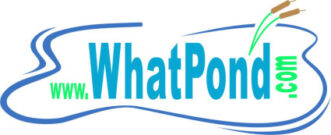Building and management of pond fish, and the associated aquatic environment require time, effort, Knowledge and understanding of relationships between land water, plants and animals. In the creation of an artificial pond, different owners will have their own objectives, and as a result, having various degrees of satisfaction with certain natural processes which occur. Owners have several choices when it comes to the type of pond fish that might be stocked. Once stocked, the owner is committed to management procedures for that type of pond fish, unless the entire population is removed then start all over.
Biology: Regardless of species, pond fish are subject to the limitations of the laws of nature, their own characteristics, habits, and to the surrounding plant life, animal life, habitat, and other environmental factors. Food is a primary importance. Natural water supports important food items; in the form of tiny organisms called plankton. The presence of plankton causes some water to have greenish, bluish, or brownish-green colors. Plankton consists of plant and animal life. Newly hatched pond fish may depend on this food source. Plankton is equally important to snails, worms, tadpoles, crayfish and other organisms that thrive in its presents. The food supply will strongly affect the population. Every body of water is different in its capacity to produce plankton, based on the fertility of the water, soils, land use on the watershed, water source, and water chemistry all influence the production of plankton and in turn affect the food supply.
The idea that ponds can support unlimited numbers and pounds of fish is a common mistake. Limits of food and space place a ceiling on satisfactory production in any body of water including, streams, lakes and sea. Stable populations of pond fish are results of a balance of two opposing forces: production and reduction Production: Production of pond fish populations is combined result of everything that favors their reproduction, growth, and survival. Most pond fish species spawn at an early age. And lay large numbers of eggs. With the right amount of food, growth is rapid, with ample space, production maybe high. There are ways that owners can provide adequate food and space for the pond fish, assuring satisfactory populations.
Reduction: Reduction is the combined result of all things that limit reproduction, growth. The survival of the pond fish. Diseases, parasites, predators, animals, other fish and overcrowding. The harvest by fishing is some of the forces that will reduce numbers. Most pond fish species have reproductive capacities that will outrun the ability of the body of water to produce food. As you can see there is a little more than just putting in fish in a pond.
Although this covers more detail of the biology we need to remember the fish need oxygen to survive. Over crowding of fish can rob oxygen from the fish. For more information on Pond Fish please take a look at our aeration mistakes page.

is there a website that addresses game fish management in ponds?
I am completeing my second pond and water fall
first one built last year before i found your web site and I did all the
wrong things you warned aganist. It was fun even at that.
Bought six mallard baby ducks 4 days old and put them in the back yard in
march last year. They wont reproduce many said. Many things on Mallard
raising were not true.
March to christmas day our duck population increased to 84.
one hen brought out of the snow on christmas day 14 little ones and within
30 minutes they were swiming in the pond. By theway regardles of the size
of the clutch they all hatch at the same time
Lots more facts learned the hard way
Thanks for your web site
Gene